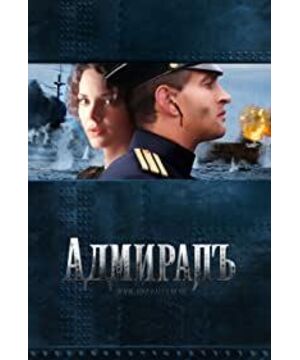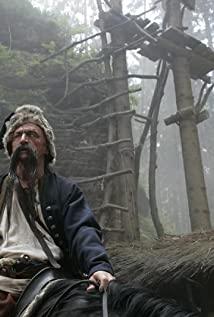The Friedrich-Karl was a German armored cruiser that struck a mine and sank near the port of Krapeda on November 17, 1914, instead of 1916 as shown in the film. In addition, the sinking of the ship was not directly related to Kolchak. From 1914 to 1915, Kolchak, a mine-laying expert, was responsible for planning offshore mine-laying operations in the Baltic Fleet. He carried out a series of dangerous night-time mine-laying operations, even extending to the important German naval ports of Kiel and Danzig. The sinking of the Friedrich-Karl is indirectly related to Kolchak, but the destroyer Vigil on which Kolchak was aboard has never engaged the Friedrich-Karl, so the thrilling naval battle was essentially nonexistent. In fact, the Friedrich-Karl was hit by a mine at 6:30, but it didn’t sink until 7:15 (the power of the mine at the time was unlikely to blow the ship into two instantly as shown in the movie), here For a while, the ship was rescued from the battleship Augsburg. Due to the timely rescue, most of the crew survived.
Of course, that battle was not entirely groundless, it may be based on Kolchak's experience in the Russo-Japanese War. At that time, Kolchak was near Lushun and commanded the destroyer Serdityi to mine the Japanese cruiser formation on the route, and sank the Japanese cruiser Takasago.
There is also a battle in which Kolchak commanded a warship to provide fire support to the army. I'm afraid this battle is also fictional. The film shows that Kolchak's ship is the Glory. The naval battle took place in 1916, and the exact time is unknown. However, the Glory had only participated in one battle before it was sunk in 1917, and that was the Battle of the Gulf of Riga in 1915. This naval battle is a pure sea battle, not the battle in the film.
Despite many fictional plots, this film is still an excellent commercial film. The plot of the whole film is compact, and there is no procrastination. The actors' acting skills are excellent. The director has also worked hard on the lens and angle, which looks very flavorful. The purpose of this film seems to be to narrate the legendary experience of the historical figure Kolchak and tell a love story at the same time, which can be said to be a very difficult goal. If it is not handled properly, the result will be a bad film, but this film finally succeeded in achieving its goal (at least in my opinion). There are no big scenes in the film, but the intensity and sense of tragic and heroic battles are well expressed. I have always believed that an excellent war movie does not depend on how grand the scene is, but whether it reflects the atmosphere of war. Kurosawa's works often consist of dozens of people, but when the swords and guns are waved, the momentum is revealed. In contrast, Shinichiro Sawai's "Blue Wolf" and Wu Yusen's "Red Cliff" are much inferior. Although the scene is magnificent, it rarely reflects the cruel nature of war and cannot give people an intuitive shock. In this film, whether it is a fierce battle at sea or a snow charge, the war is intuitively expressed. What impressed me most was the sea of flames and broken limbs on the deck of the warship, as well as the charred half of the body of the damage management personnel. The broken glass wine glass is also an interesting detail, and the beautiful old days emerge in the flying of the fragments, which is the end of a unique cave.
However, this film may not be suitable for all audiences. It is recommended that those viewers who have a deep "red complex" do not watch it, so as not to damage their monitors or fluorescent screens.
View more about Admiral reviews











